Last updated on August 3rd, 2023
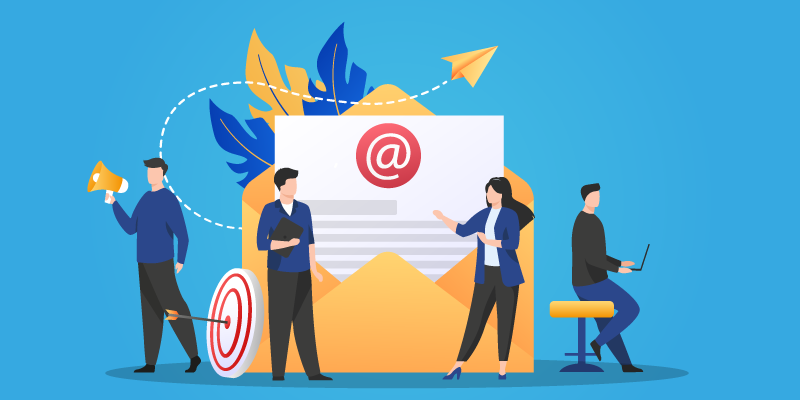
This guide will go behind the curtain of how email lead generation works and how you can implement it in your business for a massive ROI from email leads.
Every customer in existence starts as a lead, meaning they have an interest in a product or service and have the potential to buy.
But here’s the deal:
There are countless lead generation methods out there, but one of the most time-tested ones is email marketing.
No, seriously:
The average email lead generation ROI is a whopping 122%.
In this guide, you’ll learn:
- What is Email Lead Generation?
- Why Email Lead Generation Matters for Your Business
- How to Generate Email Leads Effectively
- Email Lead Generation Fundamentals
- Email Lead Generation Do’s & Don’ts
- How to Write Lead Generation Emails
- How to Manage Your Email Leads
- The Best Email Lead Generation Tool

VipeCloud is the only Automation tool your small business needs to
be the hero to your customers.
With Email, Texting, Social, Suites, Chat, Stories, Video Email & Sign Up Forms fully built-in, we provide you with the perfect platform to grow your business.
15 Day Free Trial – Get started risk free. No CC needed.
What is Email Lead Generation?
Email lead generation comes in multiple forms:
In one sense, it’s the practice of getting leads to opt-in to your list using a form and you nurturing them with emails.
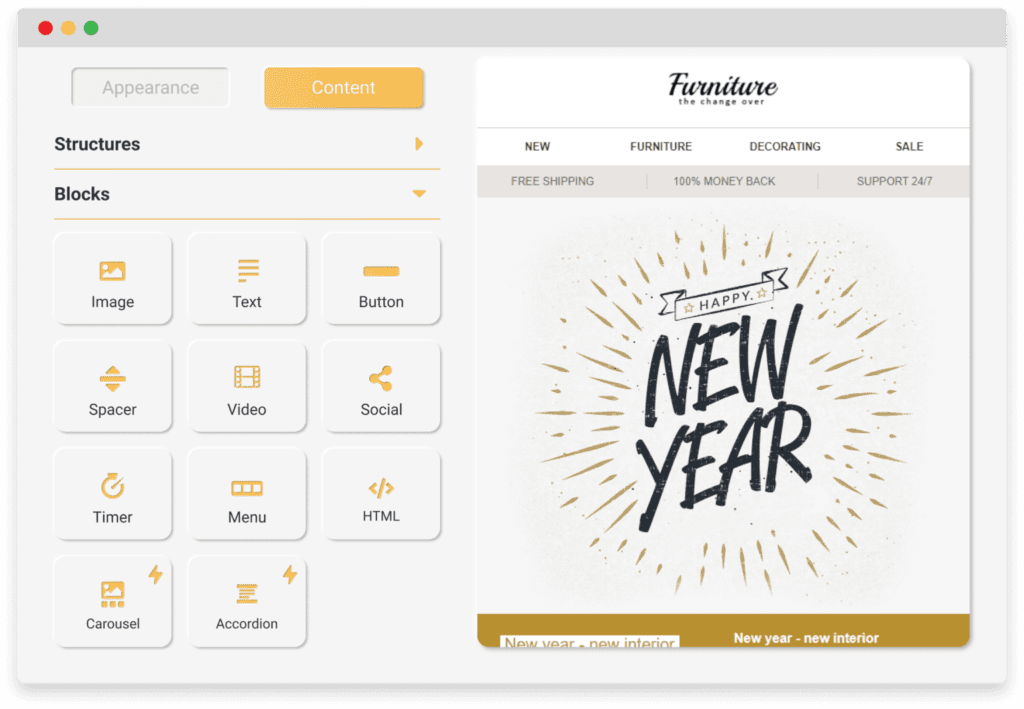
This is typically done as email newsletters, where you send out periodic emails that bring value and entice your subscribers to go further down your funnel.
In a B2B business, this could be emails to schedule a demo call with you so they can learn more about what you have to offer.
Another form of email lead generation is cold email (a form of outreach).
Cold email is when you email someone that doesn’t know you, your brand, or your product. (AKA a “cold” prospect.)
The goal is to tell them who you are and how you can benefit them, leading to your prospect doing business with you.
Both methods have the end goal of bringing leads into your pipeline.
Opt-in emails typically have a higher conversion rate simply because subscribers expect you to offer them something in your emails.
But…
With the correct principles (which we’ll outline in this article), you can drive leads pretty consistently using cold email too.
Now that we understand these email lead generation methods, why is email marketing a vital asset to your business?
Why is Email Lead Generation Crucial to Your Business?
So, what makes email lead generation crucial?
Let’s cover some key benefits you HAVE to know about.
1. Builds Brand awareness
For starters, you have brand awareness.
Just like we highlighted earlier, customers can’t make a purchase decision if they don’t know you exist in the first place.
Think about it: If you’re driving, you can’t stop for a pedestrian, you don’t see.
Email marketing allows you to bring your product and company to the customer, helping you complete the first step in turning them into a lead.
And guess what?
It doesn’t even end there.
Brand awareness also happens in your follow-up automation emails because, let’s face it: We all forget.
Follow-up emails or weekly newsletters continually put your brand in front of the right people giving you a more significant likelihood of driving leads.
Did you know that It takes roughly 5 to 7 impressions for people to remember a brand?
2. It Can Be Automated
“..But sending emails just takes too long.”
This isn’t the case because you can automate your email campaigns (cold or warm to drive opt-ins.)
You can simply use email automation software to write, schedule, and send bulk emails to a list of contacts.
It’s that simple.
VipeCloud’s Marketing Suite is an excellent way to send emails to your list efficiently.
Automation is a cornerstone of a successful business and lead generation is the first part of selling.
So automating your email lead generation is a must.
3. Nurtures Your Audience Efficiently
“The fortune is in the follow-up!” – Every successful salesperson on the face of the planet.
Nurturing is essential. The truth is, there’s a myriad of reasons someone doesn’t become a lead:
- Temporarily distracted
- Being unsure
- Busyness
- Confusion
Nurturing your prospects is one thing, but how do you do it efficiently?
When we look at cold calling, nurturing requires going into your database or CRM to dial, call and re-engage the person.
Sure it’s nurturing, but how about having more efficiency?
With email lead generation, your nurturing can happen with a simple drip campaign.
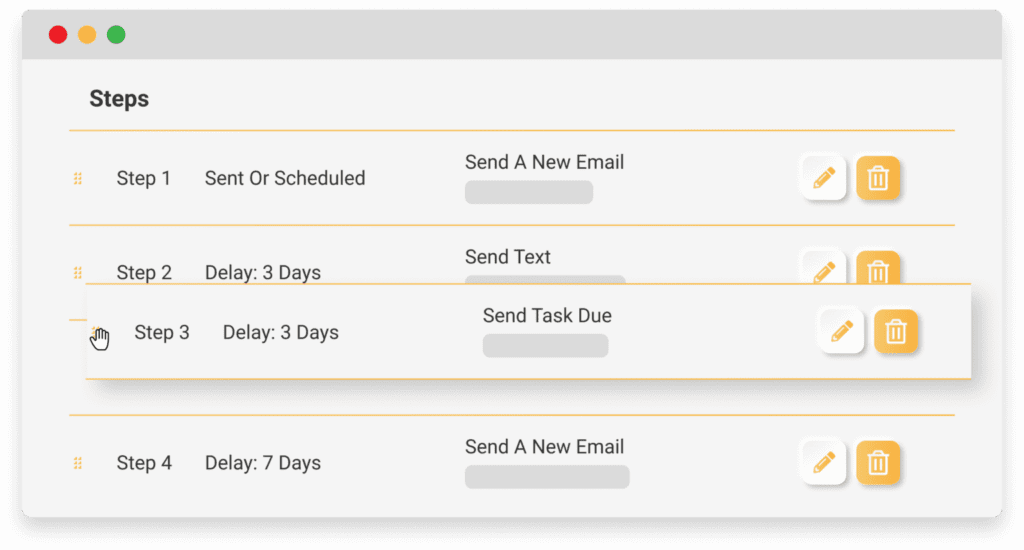
Nurture campaigns are scheduled emails sent out to your audience in a specific order.
It tells them about your offer, and over time — your drip campaign motivates prospects to take some action.
You could be planning an entirely different project for your business while your drip campaign runs and brings you new qualified leads.
4. Cost-Effective ROI
The average ROI for $1 of email marketing is $42.
Email lead generation can prove to be some of the best money you’ve ever spent.
Not only can you get great results, but your return on what you put in can be incredible.
Especially if you’re in the B2B space and you’re selling a high-ticket product to your audience.
And compared to ads, email may be your best bet. Here’s why:
Running ads like on Facebook requires a higher budget along with more time, aka testing, optimizing, and updating your campaigns (and retargeting your audience).
Sure, you could outsource to save you time, but an ads manager would require a higher marketing budget.
5. Cold Email Brings Consistency to Your Lead Flow
Inbound lead generation is great for building your brand over time.
But the problem with inbound is:
- It takes time
- It’s unpredictable
- You can’t directly control who your leads are
However, cold email outreach is very predictable, controllable, and relatively fast.
Instead of waiting for the leads to come to you, you’re going to the leads.
It might require more sales skills, but the results could come as soon as an instant.
How Do I Generate Leads Using Email Marketing?
Let’s now discuss how to tangibly drive leads using email marketing.
Create An Opt-In Form (Inbound)
Your first step to driving email leads is choosing the form of email prospecting you’d like to do.
If you’re going the warm route, you should create some sort of lead magnet that gets your audience to put their name and email into your form and join your list.
Your lead magnet can be a free eBook, how-to guide, checklist, video, and more!
Once they opt-in, they’re technically a lead, but you could always bring them up your value ladder with emails that mention your offer.
Let’s say you run an auto detailing shop with an email list from past customers. You can send an email campaign that specifically drives leads for car wrapping services. The call to action could be to give you a call for a free quote if they’re interested.
Send A Cold Email Campaign (Outbound)
Cold outreach begins with prospecting for people that fit the criteria of your ideal client.
Create a list of contacts, and load them into your CRM or email software.
Write emails that inspire curiosity from your cold audience.
Now that you’ve chosen your method, here are the next steps to follow! (Don’t worry, we’ll be elaborating on all of these throughout this guide.)
- Introduce yourself, why you’re reaching out, ask a question, and explain what you can do for them.
- Give your audience a good offer
- Call to action (One link)
- Follow-up automation
VipeCloud Pro Tip: Remember to add an “Unsubscribe” button to the footer of all your emails in order to stay compliant with spam regulations. This protects your email deliverability and prevents you from being marked as spam.
Top 4 Email Lead Generation Fundamentals
One Great Core Offer
Whether you’re sending warm or cold emails, you want to have a core offer for your audience.
I’m sure you’ve gotten those emails with tons of links and promotions in them that just made you want to hit the back button.
Segment your email campaigns using one core offer on each in order to see what’s getting you leads, calls, etc.
Create an Eye-Catching and Engaging Subject Line
The subject line is a major part of generating cold or warm leads.
After all…
No one will take action if they haven’t opened your email in the first place.
A good subject line helps your email stand out from your audience’s overcrowded and noisy inbox.
(…you know, those other emails they don’t want to read.)
Here are some ideas for coming up with compelling subject lines that boost your open rate:
- Asking A Question – “Quick Question For Jim”
- Personalization – “Sarah, Your LinkedIn Article Was Awesome”
- Number List – “8 Shocking Hotel Rip-offs To Know About”
Although open rate averages vary from industry to industry — usually, the standard is around 20% or more.
Lastly, remember that with subject lines: less is more.
It’s advised to not use more than 9 words and 60 characters for your subject line.
Be Concise
The attention span of today compared to 20 years ago isn’t even close.
The truth is everyone has a lot going on, so make sure your emails are as to the point as possible while still putting in all the necessary details.
This is especially the case for cold emails.
Getting an email from someone you don’t know makes you less willing to hear them out.
So with that being said, keeping your cold emails concise will likely drive you more leads than not.
Use Email Authentication for Good Deliverability
As impressive as email marketing is, many people use it for the wrong reasons.
Spammers are pretty prevalent, so email services have taken measures to protect users from spam.
If you don’t authenticate your email, you run the risk of someone being able to send emails from your email address.
See where this could cause some security issues?
We recommend you utilize specific DNS records to help your email deliverability and protect your domain from people with malicious intentions.
An easy way to check if your email deliverability is squared away?
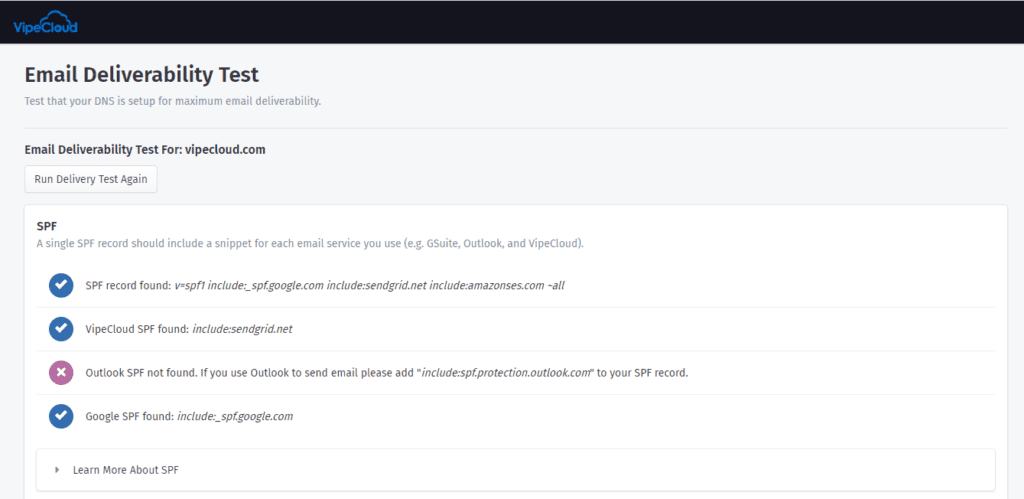
Use the free VipeCloud Email Deliverability tool.
Personalize Your Emails
Personalization is one of the strongest email marketing tactics for keeping your consumers engaged. Gather enough information about your clients, such as their name, how they engage with your business, how many times they have purchased from you, and so on. Then send them tailored emails based on this information.
Personalization humanizes your brand and makes your emails more appealing to your audience. You can add it to your emails in various ways to make them more engaging to your customers. For example, you can send beautiful emails on your prospects’ birthdays with a unique offer only for them.
Keep Your Subscribers Engaged with Valuable Content
When a prospect opts in to receive emails from you, they are considered a lead. However, this is merely the beginning of their relationship with you.
To turn them into paying customers, you must keep them engaged with valuable information.
Instead of providing “fluff content” only to send an email, focus on providing information that is genuinely beneficial to your readers. Provide relevant, targeted content that will keep your readers interested and craving more.
Always prioritize the value you provide to your audience while producing content. To generate valuable topics, you must first identify your audience’s pain points. Then, based on those pain areas, build blogs, how-to manuals, checklists, and infographics.
Send Emails at the Right Time
The day and time at which you send your emails are critical.
Not every day of the week is appropriate for launching email marketing campaigns to produce B2B leads for your company.
Your business has a distinct set of target audiences, each with its own set of tastes, habits, and choices. As a result, what works for one business may provide the opposite outcome for another.
So, research your consumers and choose the best day and time to send emails to get the best results in the form of leads. Everything depends on your target demographic and when they’re most likely to check their mailbox.
Add a Call to Action
The Call-To-Action is a staple in marketing as a whole. This is a direct message telling your prospects what the next steps are.
Your lead generation emails need this because it’s your best bet for turning people into leads.
Imagine:
You send out an email giving tons of value but there’s no clear message at the end of it…
What happens?
Sure your audience probably liked your email but they’ll likely click off if there’s no CTA. Even if you briefly mentioned your offer, you may still be losing out on leads if you don’t end with a strong CTA.
Alex Berman, Founder of Experiment27, highlights how your emails can convert well when emailing to the right niche market in the LTV podcast:
“Knowing who you’re going after and what you’re going to say is going to return more lucrative results than just saying everything to everybody.”
So if you find yourself doing CTA’s, yet your conversion rate isn’t too pretty — make your messages more specific and tailored to your audience as well!
Email Lead Generation Do’s & Don’ts
Before we get into the right messaging that will drive you leads:
We have to cover some do’s and don’ts of email lead generation.
This list will save you hours of headaches and get you to the results you want faster.
1. Do Revise & Draft Your Emails
Like anything you write, it’s essential to devise a draft of what you want to say.
What messaging and tone do you want to convey to your audience?
How do you want them to react or feel when they read your email?
This is known as copywriting — writing words that persuade (more on this later).
A draft also allows you to check for typos, broken links, and other things that could negatively affect your campaign.
Drafts help your emails get better and better because you can pinpoint weak spots and make 2.0 versions of them before sending them out.
2. Do Look At The Data
When sending emails to generate leads, you’ll get feedback on your campaigns.
Open rates, click-through rates, leads, and more.
Your primary metric is leads, of course, but other metrics will affect whether or not someone becomes a solid lead.
For example, if your open rate is only 2%, you probably won’t get many leads since not enough people are opening your email.
By looking at the data, you would know that you need to create a better subject line to get more opens.
VipeCloud Pro Tip: You can split your customer list in half and A/B test different subject lines to see which one performs the best.
Also, looking at data doesn’t just stop with your CRM or email software dashboard. Look into your industry’s email marketing statistics and see how you fare.
Your metrics and emails as a whole could get 3x better.
Here are some data-driven questions to ask yourself as you run warm or cold email lead generation campaigns:
- What percent of people open my emails?
- How many people reply?
- How many people convert to leads?
- How often do people unsubscribe?
- What is my link click percentage
- What do people do after clicking my link?
3. Don’t Forget To Personalize & Customize Emails
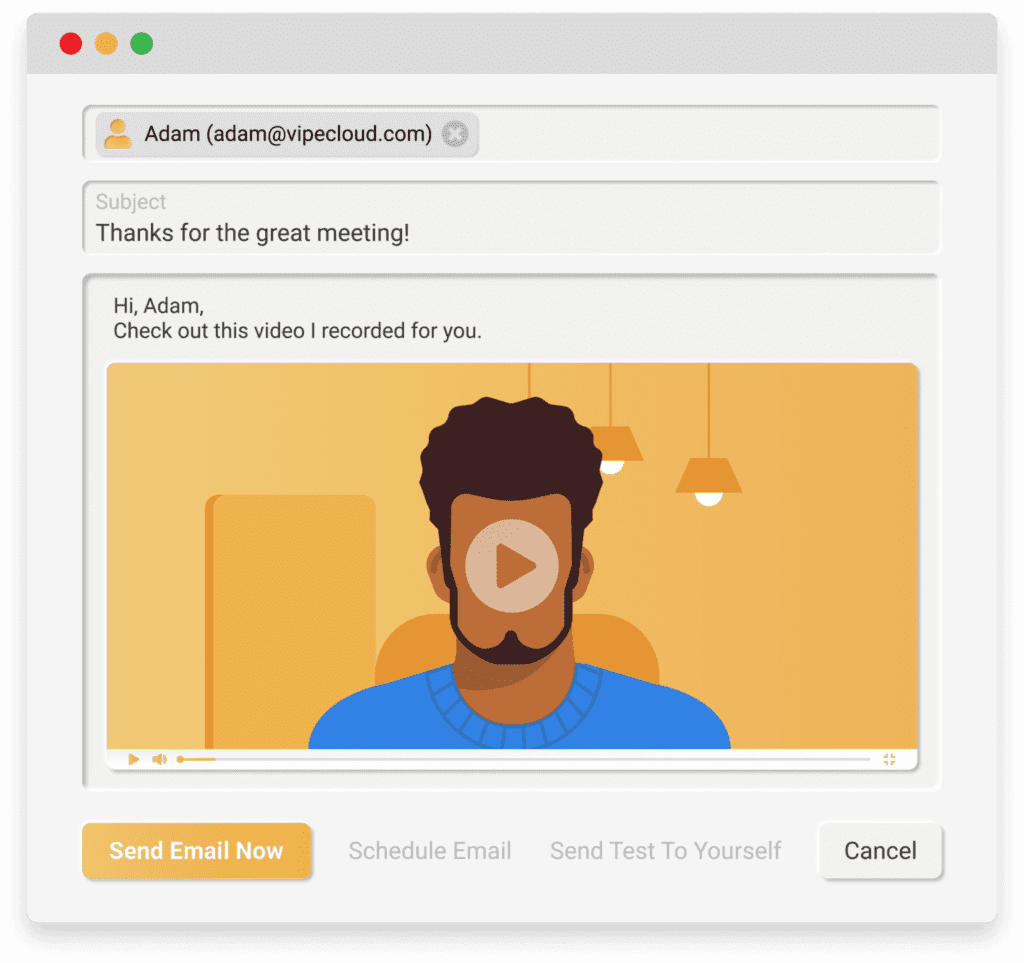
Personalization is a large part of a successful email campaign.
Your prospects probably have a big inbox, so making your emails relevant to them is crucial.
Here are ways of personalizing your emails to them:
- Using the prospect’s name using email name fields i.e. {contact.firstName}
- Using the prospect’s name in the subject line (Emails with personalized subject lines are more likely to be opened.)
- Drip campaigns for specific lead magnets – example: “I see you downloaded my eBook, here’s 20% OFF my course.”
- List segmentation using tags and fitting your messaging accordingly
- Sending personalized compliments about something the person did
Personalized email marketing is said to generate a median ROI of 122%.
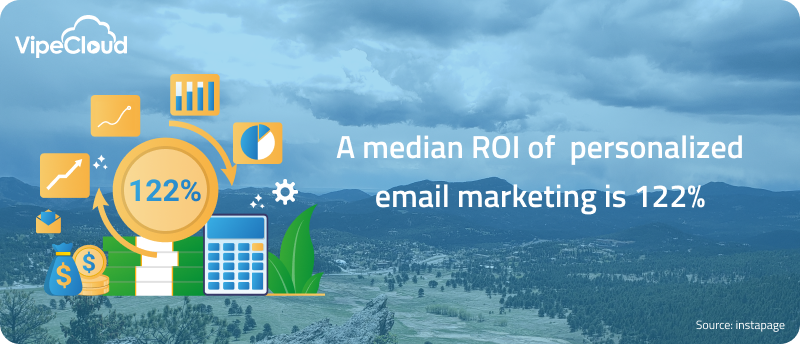
4. Don’t Spam
We touched on why you should protect your domain from spammers earlier.
Now, we’ll discuss not spamming as an email sender since it affects your email deliverability, marking you as a spammer by anti-spam email systems (which isn’t very good).
Here’s how to avoid spamming:
- Don’t use too many links in your email.
- Use a custom sending domain and not a default one.
- Send emails from a verified email domain.
- Don’t overuse spam words (FREE, apply today, cheap, guarantee, etc.)
- Send your emails at different times intervals (i.e., 100 emails at noon then 100 more at 4:00 pm)
Keep these in mind, especially when generating leads by cold email.
5. Do Segment Your Contact List
Segmenting your list based on audience demographics can bring you great returns because your messaging gets more specific to a niche market.
Humans pay attention to things that are relevant to them, and this is the same case with emails.
You can accomplish this by adding tags to your customer list in your CRM or email software.
After tagging, you can send relevant emails to specific niche prospects on your list.
This, along with personalization, is a big step in converting people into leads, and it can be automated.
6. Leverage Social Media Platforms
Social media channels can be pretty powerful in helping you grow your email list.
You can add a CTA to your social media profile, excite your audience with an offer they can’t resist, and drive them to your landing page where they can leave their email addresses to claim the offer.
7. Use Email Automation
Email automation tools enable you to automatically send bulk emails to specific recipients at predetermined times.
What’s good about automation is that you can set it once and forget about it.
To increase your email list with email automation, you can use specific triggers to send the right message to the right people at the right time. A trigger may be activated when customers do any of the following:
- Subscribe to your email list
- Subscribe to a service
- Buy your products
- Register for a webinar
- Download an e-book, report, presentation, etc.
- And so on
How To Write Lead Generation Emails: Using The Right Messaging
This section deals with the correct principles to writing powerful emails that get you clicks and eventually leads.
Direct Response Marketing
Effective email marketing utilizes direct response principles to get prospects to opt into an offer.
Direct response marketing can be broken into 3 distinct parts:
- An Offer – a product, trial period, guarantee, time or quantity limit, etc., that appeals to the prospect’s interests; and leads them to take action.
- Information – Information about the product, person, and company for the prospect to base their buying decision on. Highlights the value of the product, and the messaging is personalized, relevant, and persuasive.
- Call To Action – A clear action response that tells the reader to do something specific after reading the information (Just like we highlighted earlier.) (examples: Call now, Click the link below, sign up today, etc.)
All of this ties into your email copy.
Copy or copywriting is using the right words that get your readers to become leads.
When you follow the principles we spoke about and utilize these following strategies; you’ll be on your way to more lead conversions.
Space Out Your Paragraphs
Picture this:
You just got home from work, you’re tired, and you get an email.
You open it up and…
It’s a jam-packed paragraph that you begin reading but you eventually stop because it just seems too long.
This is why spacing your paragraph lines on your emails can lead to more lead conversions.
People simply read more of your email and are able to digest your message better.
Which leads to more link clicks and eventually more leads.
Scarcity & Urgency
Scarce products and services typically get seen as more valuable. It’s a natural part of human buying behavior.
Consumers show more urgency when there’s a limit to gaining something.
Whether in the B2B or B2C space, show some scarcity and urgency in your emails to prevent the old “I’ll do it later” crowd.
Examples:
- “I’m releasing my course to 10 people for 40% off.”
- “Only taking on 3 clients this month.”
- “Get my eBook for free, this week only.”
Lastly: Make sure you actually follow through on your scarce offers — if they end, they end. Doing this shows good business integrity!
Bonus: More Ways Of Crafting Powerful Messaging
- Using Stories – talk about an experience that’s relevant to your prospects.
- Using Testimonials & Case Studies – Show results you’ve gotten for past clients and customers.
- Directing leads to a landing page – Create a landing page that expands on what you said in your email and converts them to a lead or buyer.
How to Organize Your Email Leads
This section lists excellent ways of staying organized as your leads start to come in.
- Remove fake emails/contacts – Check your lead list for fake emails. This will help lower your bounce rates for future emails you send to your leads.
- Lead Scoring – Assign point values to leads to determine the most valuable ones for your business. This can be how they’ve engaged with your business, information they’ve submitted, industry, their revenue, and more.
- Use a CRM – Use a marketing CRM to email your leads and stay on top of your metrics and statistics.
- Lead tagging – Helps segment your list into groups.
The Best Email Lead Generation Tool
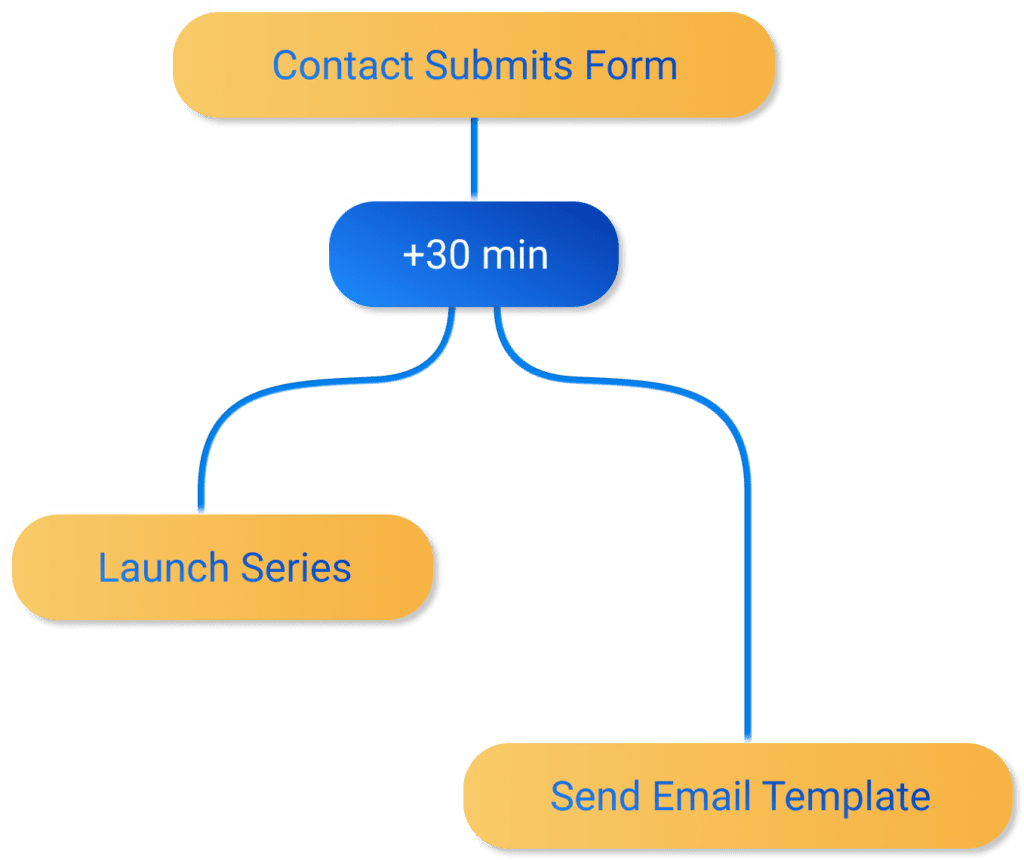
Email lead generation is taking businesses to new heights each and every day.
But to get to that point, there has to be sound fundamentals in place, great messaging, and systems that organize and nurture your leads.
Vipecloud’s Marketing Suite is being used by business owners just like you to make their email lead generation efficient and straightforward.
Try a free 15-day trial today to start generating more email leads — or request a demo today.
Email Lead Generation FAQ
Email leads are those whose contact information you obtained via an opt-in form. You can nurture these leads further via email and other channels using permission marketing. These leads often provide their email address via an opt-in form in return for an offer.
Email marketing to B2B clients offers several advantages, including simplicity of deployment and low cost. However, in order to convert a cold list of contacts into opt-in leads, the campaign must first reach the inbox and then give the reader precise and highly actionable value.

Thank you for providing this information; it was extremely useful.